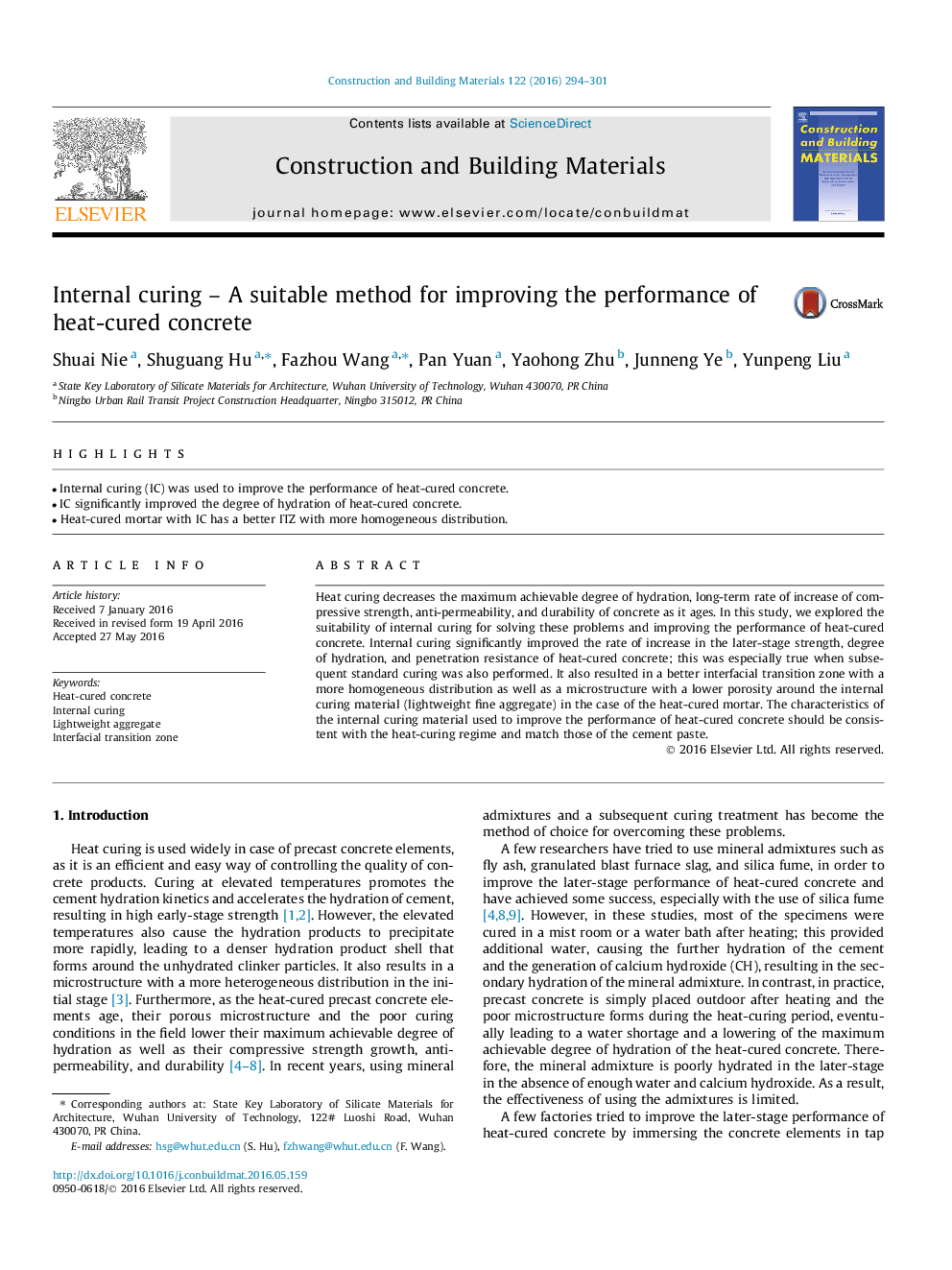| Article ID | Journal | Published Year | Pages | File Type |
|---|---|---|---|---|
| 6718028 | Construction and Building Materials | 2016 | 8 Pages |
Abstract
Heat curing decreases the maximum achievable degree of hydration, long-term rate of increase of compressive strength, anti-permeability, and durability of concrete as it ages. In this study, we explored the suitability of internal curing for solving these problems and improving the performance of heat-cured concrete. Internal curing significantly improved the rate of increase in the later-stage strength, degree of hydration, and penetration resistance of heat-cured concrete; this was especially true when subsequent standard curing was also performed. It also resulted in a better interfacial transition zone with a more homogeneous distribution as well as a microstructure with a lower porosity around the internal curing material (lightweight fine aggregate) in the case of the heat-cured mortar. The characteristics of the internal curing material used to improve the performance of heat-cured concrete should be consistent with the heat-curing regime and match those of the cement paste.
Related Topics
Physical Sciences and Engineering
Engineering
Civil and Structural Engineering
Authors
Shuai Nie, Shuguang Hu, Fazhou Wang, Pan Yuan, Yaohong Zhu, Junneng Ye, Yunpeng Liu,
